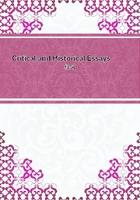
第48章
We possess no data which will enable us to compare with exactness the force of the two sects. Mr. Butler asserts that, even at the accession of James the First, a majority of the population of England were Catholics. This is pure assertion; and is not only unsupported by evidence, but, we think, completely disproved by the strongest evidence. Dr. Lingard is of opinion that the Catholics were one-half of the nation in the middle of the reign of Elizabeth. Rushton says that, when Elizabeth came to the throne, the Catholics were two-thirds of the nation, and the Protestants only one-third. The most judicious and impartial of English historians, Mr. Hallam, is, on the contrary, of opinion, that two-thirds were Protestants and only one-third Catholics. To us, we must confess, it seems, incredible that, if the Protestants were really two to one, they should have borne the government of Mary, or that, if the Catholics were really two to one, they should have borne the government of Elizabeth. We are at a loss to conceive how a sovereign who has no standing army, and whose power rests solely on the loyalty of his subjects, can continue for years to persecute a religion to which the majority of his subjects are sincerely attached. In fact, the Protestants did rise up against one sister, and the Catholics against the other. Those risings clearly showed how small and feeble both the parties were. Both in the one case and in the other the nation ranged itself on the side of the government, and the insurgents were speedily put down and punished. The Kentish gentlemen who took up arms for the reformed doctrines against Mary, and the great Northern Earls who displayed the banner of the Five Wounds against Elizabeth, were alike considered by the great body of their countrymen as wicked disturbers of the public peace.
The account which Cardinal Bentivoglio gave of the state of religion in England well deserves consideration. The zealous Catholics he reckoned at one-thirtieth part of the nation. The people who would without the least scruple become Catholics, if the Catholic religion were established, he estimated at four-fifths of the nation. We believe this account to have been very near the truth. We believe that people, whose minds were made up on either side, who were inclined to make any sacrifice or run any risk for either religion, were very few. Each side had a few enterprising champions, and a few stout-hearted martyrs; but the nation, undetermined in its opinions and feelings, resigned itself implicitly to the guidance of the government, and lent to the sovereign for the time being an equally ready aid against either of the extreme parties.
We are very far from saying that the English of that generation were irreligious. They held firmly those doctrines which are common to the Catholic and to the Protestant theology. But they had no fixed opinion as to the matters in dispute between the churches. They were in a situation resembling that of those Borderers whom Sir Walter Scott has described with so much spirit, "Who sought the beeves that made their broth In England and in Scotland both."
And who "Nine times outlawed had been By England's king and Scotland's queen."
They were sometimes Protestants, sometimes Catholics; sometimes half Protestants half Catholics.
The English had not, for ages, been bigoted Papists. In the fourteenth century, the first and perhaps the greatest of the reformers, John Wicliffe, had stirred the public mind to its inmost depths. During the same century, a scandalous schism in the Catholic Church had diminished, in many parts of Europe, the reverence in which the Roman pontiffs were held. It is clear that, a hundred years before the time of Luther, a great party in this kingdom was eager for a change at least as extensive as that which was subsequently effected by Henry the Eighth. The House of Commons, in the reign of Henry the Fourth, proposed a confiscation of ecclesiastical property, more sweeping and violent even than that which took place under the administration of Thomas Cromwell; and, though defeated in this attempt, they succeeded in depriving the clerical order of some of its most oppressive privileges. The splendid conquests of Henry the Fifth turned the attention of the nation from domestic reform. The Council of Constance removed some of the grossest of those scandals which had deprived the Church of the public respect. The authority of that venerable synod propped up the sinking authority of the Popedom. A considerable reaction took place. It cannot, however, be doubted, that there was still some concealed Lollardism in England; or that many who did not absolutely dissent from any doctrine held by the Church of Rome were jealous of the wealth and power enjoyed by her ministers. At the very beginning of the reign of Henry the Eighth, a struggle took place between the clergy and the courts of law, in which the courts of law remained victorious. One of the bishops, on that occasion, declared that the common people entertained the strongest prejudices against his order, and that a clergyman had no chance of fair play before a lay tribunal. The London juries, he said, entertained such a spite to the Church that, if Abel were a priest, they would find him guilty of the murder of Cain. This was said a few months before the time when Martin Luther began to preach at Wittenburg against indulgences.